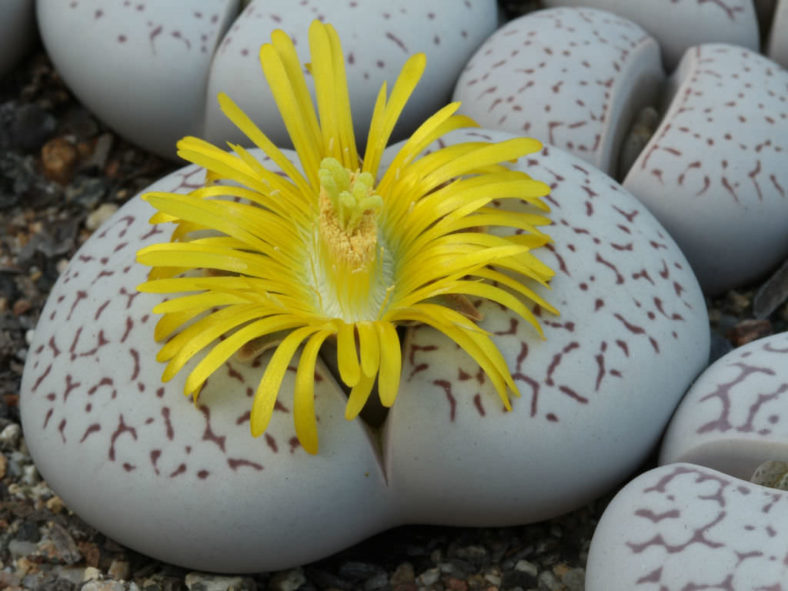Dinteranthus is a genus of stemless succulents from the Cape Province in South Africa, close to the Orange River, where they get mostly summer rain. They are mesembs and resemble those genera within the Aizoaceae family. They are most closely related to Lithops, Lapidaria, and Schwantesia. However, they require even less water and have a distinctive keel along the lower leaf surface. The generic name honors Professor K. Dinter.
Dinteranthus are popular among collectors. These plants need excellent drainage and a good deal of light. They should be treated like Lithops, though they require less water. The leaf pairs are separated by a deep fissure from which the yellow flower arises in the fall. After the plant blooms, a new pair of leaves develops, using the moisture from the older leaves to grow. The plants should not be watered until the old pair of leaves is shriveled. These plants will take a small amount of frost.
Growing Conditions and General Care
The adult plants behave like Lithops: summer expansion leads to flowering in fall, followed by a slow transfer of resources in winter. The main difference is that the presence of two active leaf pairs is not unusual in some Dinteranthus. These plants require slightly less water than most Lithops. Excellent drainage is essential, as all Dinteranthus are somewhat prone to rot. Dinteranthus microspermus subsp. puberulus is the most resistant of the six taxa. Their nutritional requirements are amazingly modest, and the root systems of even the healthiest plants are minuscule. What they need most critically is good light, which will give them a bone-white aspect. Older long-stemmed plants can and usually should be turned into cuttings and re-rooted.

Propagation
The real trouble with Dinteranthus is that the seedlings are so tiny that they are apt to damp off. But if the following rules are observed, success is likely. Sow in summer. Use sterilized soil with extra grit and enough peat to ensure high acidity. Do not cover the seeds. Place the sown pot in a water bath, cover the whole assemblage with clear plastic, and place it outdoors in a bright spot. Wait three full days, remove the pots to your usual place of germination, and mist them at least twice a day. Seedlings should be evident within twelve days of sowing. They are tiny at first and resemble green crystalline raspberries. The object is to induce them to grow as rapidly as possible. If this takes daily mist-feeding, then do it. The cotyledons should turn greyish-white from a calcium deposition that strengthens them by mid-fall. After this whitening, the fissure walls part and the true leaves are visible through the resultant peephole. After that, you are home-free: treat the seedlings like young Lithops. Delay transplanting until the second set of true leaves is fully formed.
Source: vivante-passerelle.net
Links
- Back to genus Dinteranthus
- Succupedia: Browse succulents by Scientific Name, Common Name, Genus, Family, USDA Hardiness Zone, Origin, or cacti by Genus